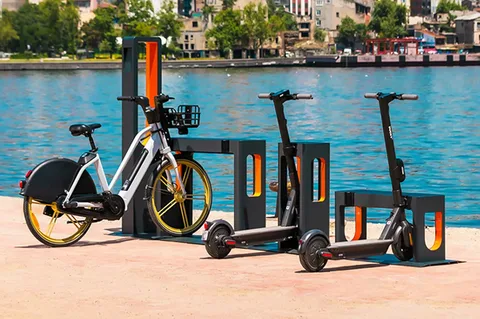Introduction
The US micro mobility market is transforming urban transportation by offering compact, cost-effective, and eco-friendly alternatives for short-distance travel. This segment includes electric scooters, e-bikes, hoverboards, and shared bicycles, providing an efficient solution to traffic congestion and environmental challenges in metropolitan areas. With rising fuel costs, growing sustainability awareness, and an increasing focus on first- and last-mile connectivity, micro mobility has become a preferred mode of transport for millions of Americans. Supported by smart city initiatives and technological innovation, the market continues to expand rapidly across major US cities, reshaping how people commute daily.
Market Drivers
A key driver of the US micro mobility market is the increasing urban population and the need for efficient last-mile connectivity. As cities face mounting traffic congestion, micro mobility offers an agile and affordable alternative to cars and public transport. The rising adoption of electric scooters and e-bikes, driven by convenience, affordability, and eco-consciousness, has fueled widespread growth. Government support through infrastructure development—such as dedicated bike lanes and charging stations—has also played a pivotal role. Additionally, the integration of smartphone-based ride-sharing apps has revolutionized the accessibility and usability of micro mobility solutions.
Market Challenges
Despite its rapid adoption, the US micro mobility market faces challenges such as safety concerns, regulatory inconsistencies, and infrastructure limitations. Many cities lack dedicated lanes or parking spaces for e-scooters and e-bikes, leading to operational inefficiencies and road safety risks. Vandalism and theft of shared vehicles remain major issues for operators, increasing maintenance and replacement costs. Moreover, changing local regulations and restrictions on fleet sizes in urban centers can hinder business scalability. Weather conditions and seasonal demand fluctuations also impact usage patterns across different states.
Market Opportunities
The growing emphasis on sustainability and urban mobility transformation presents vast opportunities for the US micro mobility market. The increasing adoption of electric-powered vehicles supported by renewable energy aligns with nationwide carbon reduction goals. Integration with public transportation systems through shared mobility platforms can improve last-mile connectivity and expand ridership. Advancements in battery technology, longer range, and faster charging options will further enhance user experience. Additionally, the introduction of subscription-based and corporate mobility programs offers new revenue streams for service providers. The rising trend of smart, data-driven city planning will also open avenues for seamless integration of micro mobility solutions.
Regional Insights
The micro mobility market in the US is highly concentrated in urban regions such as California, New York, Texas, Florida, and Washington D.C. Cities like Los Angeles, San Francisco, and Austin lead in adoption due to strong demand for short-distance, eco-friendly commuting options. The West Coast dominates with robust infrastructure and favorable weather conditions supporting year-round use. The Midwest and Northeast regions are gradually expanding adoption through public-private partnerships and local government initiatives aimed at reducing urban congestion and promoting green mobility. Suburban areas and university campuses are emerging as new hotspots for shared e-scooter and e-bike programs.
Future Outlook
The future of the US micro mobility market lies in integration, innovation, and sustainability. As cities evolve into smart ecosystems, micro mobility will play a crucial role in reducing carbon footprints and enhancing transportation efficiency. The shift toward autonomous micro vehicles, AI-based fleet management, and real-time tracking systems will redefine operational efficiency. Growth in EV charging infrastructure will support large-scale deployment, while subscription-based ownership models will attract long-term users. With rising public acceptance and technological maturity, micro mobility is set to become a key pillar of urban transportation planning across the US.
Conclusion
The US micro mobility market is reshaping the way Americans move through their cities, combining convenience, affordability, and sustainability in one compact package. While challenges such as regulation and infrastructure persist, growing public support, technological innovation, and environmental awareness ensure steady market expansion. As cities continue to invest in green infrastructure and connected transport systems, micro mobility will remain a cornerstone of the future urban mobility landscape—promoting cleaner, smarter, and more efficient transportation across the nation.

